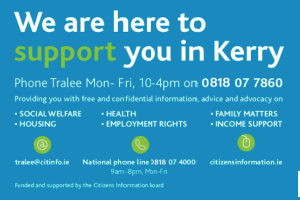 Alex Hoffman, the newly appointed Associate Solicitor at Pierse McCarthy Lucey Solicitors, Ashe Street Tralee, says that as the economy recovers and the regional commercial property market gets back to its feet, take-up of office and retail space in urban areas is expected to continue into 2019 and beyond.
Alex Hoffman, the newly appointed Associate Solicitor at Pierse McCarthy Lucey Solicitors, Ashe Street Tralee, says that as the economy recovers and the regional commercial property market gets back to its feet, take-up of office and retail space in urban areas is expected to continue into 2019 and beyond.
Here Alex sets out the key issues that tenants should be aware of when entering into a lease…
Rent
This will always be the first consideration; how much will it be and when must it be paid? Rents for commercial properties will vary depending on the type of property (office, retail, warehousing etc.), it’s location, age and condition, and are generally paid monthly or quarterly in advance.
Rent can be a fixed amount or may be calculated as a percentage of turnover, which is often the case in the retail sector, particularly for units in large shopping centres.
Rent reviews
These typically occur at five yearly intervals. Whilst “upwards only” reviews are no longer permitted in new leases since 2010, the ban has resulted in Landlords developing some alternative approaches to rent review, including turnover rents, stepped rents, index-linked rents and “cap-and-collar” rents that cannot increase/decrease beyond a set percentage.
Extras
Tenants should bear in mind that as well as rent, they may be required to pay to the landlord a service charge (in the event that the property forms part of a building or larger development), and also a contribution towards the landlord’s cost of insuring the premises.
There will also of course be commercial rates and sanitary charges payable to the County Council and Irish Water.
Term
While five year leases remain commonplace for smaller office and retail spaces, tenants of larger units tend to take leases for terms ranging from ten to twenty years.
Break Clauses
There is no automatic right to “break” the lease. However, it may be possible to negotiate an entitlement to terminate the lease, known as a “break clause”, at one or more intervals during the term.
During the downturn break clauses were one of a number of inducements used by Landlords to entice tenants to sign up to leases. Other inducements which may be offered to prospective tenants include rent free periods, capital contributions and fit out allowances.
Repairs
Repair clauses can be extremely onerous, particularly in full repairing and insuring leases (FRI Leases). FRI leases, commonly used for longer term tenancies, relieve the landlord of all liability for the cost of insurance and repairs.
It is crucial for the prospective tenant to carefully review the wording of the repair clause, as the landlord can insert an obligation for the tenant to “put” the property into good repair.
This means that regardless of the condition of the property when the tenant moves in, the tenant will be obliged to completely repair the premises to a high standard at their own expense.
An effective way to limit the extent of repair and to avoid a dispute down the line is to include in the lease a photographic schedule of condition which sets out the condition of the premises at the start of the lease.
* The material contained in this article is for general information purposes only and does not constitute legal or other professional advice. No liability whatsoever is accepted by Pierse McCarthy Lucey for any action taken in reliance on the information contained in this article.
Alex Hoffman has considerable experience in Agricultural Law, Commercial Law, Probate and the Administration of Estates, Taxation, Residential Conveyancing. A Bachelor of Laws in Law & European Studies, AITI Chartered Tax Adviser (CTA).
• To make an appointment with Alex Hoffman, contact Pierse McCarthy Lucey Solicitors, 9 Ashe Street, Tralee, between 9:00am and 5:30pm Monday to Friday, on 066 7122900 or email alex.hoffman@pmcl.ie.












